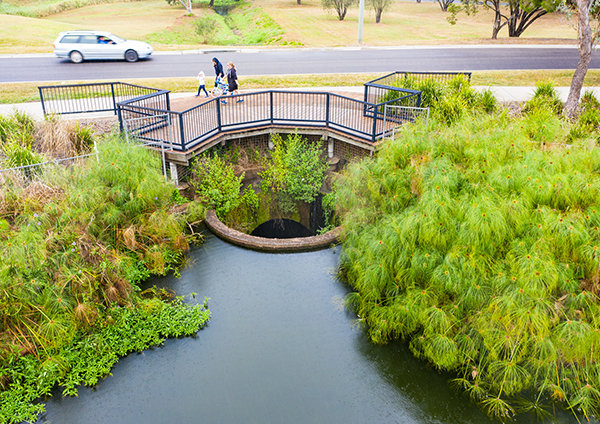Council adopts new waterbody strategy

Managing nuisance waterbird populations to reduce nutrient loads in Council waterbodies is one of a number of recommendations in a new strategy adopted by the Fraser Coast Regional Council.
At its recent meeting, Council also endorsed guiding management plans for the Ululah Lagoons and Lowlands Lagoons (Anembo Lakes) and adopted a Council Policy for Constructed Waterbodies.
“The Fraser Coast Waterbody Management Strategy will assist Council to sustainably manage our 50 waterbody systems,” Cr Zane O’Keefe said.
“Community feedback confirmed that public understanding of waterbody management is divided.
“Some residents see the waterbodies as lakes and want them to be cleaned of water plants and have mown grass up to the waterline.
“Unfortunately, in some instances trees and shrubs around the lagoons and reeds along the water edge have been destroyed.
“The water plants within and around waterbodies play a crucial role in waterbody health.
“The new strategy seeks to manage waterbodies as part of the stormwater system, while considering residents’ expectations. Management priorities have considered the waterbody condition as well as its values to the community.
“They have to work as stormwater detention basins as well as waterbodies which are havens for wildlife in suburbia.”
The strategy identified the following key practices which will help improve our waterbodies:
- Establish and maintain terrestrial and aquatic plants around and within waterbodies;
- Ensure waterbody edges are safe;
- Treat and remove pollutants from stormwater before it enters a waterbody;
- Use aquatic weed harvesting to target declared aquatic weeds;
- Manage nuisance waterbird populations to reduce nutrient inputs, by discouraging waterbird feeding and reducing weed trees overhanging water;
- Consider opportunities to fill isolated pockets/stagnant areas, reduce waterbody depth to increase flushing and water turnover, and create wetlands in shallow waterbody areas.
Dredging or deepening waterbodies were identified as practices to be avoided due to high costs and environmental impacts (such as disturbing sediment and difficulty in rehabilitating).
To avoid potential public health risks due to fluctuating water quality, aquatic recreation and water extraction will continue to be restricted.
“Historically Council has dealt with waterbody management issues individually as they arose,” Cr O’Keefe said.
“Generally, urban waterbodies tend to decline in condition over time, so we needed the strategy to inform future management.
“A well-designed waterbody can add value to the urban landscape in terms of visual amenity and wildlife habitat.”
“We also need to have guidelines in place so that when waterbodies are handed over to Council as assets from new developments that they meet set standards, so ratepayers do not inherit huge on-going management costs.
The strategy and management plans for the Ululah Lagoons and Lowlands Lagoons (Anembo Lakes) will soon be available on the Publications page of the Council website www.frasercoast.qld.gov.au
